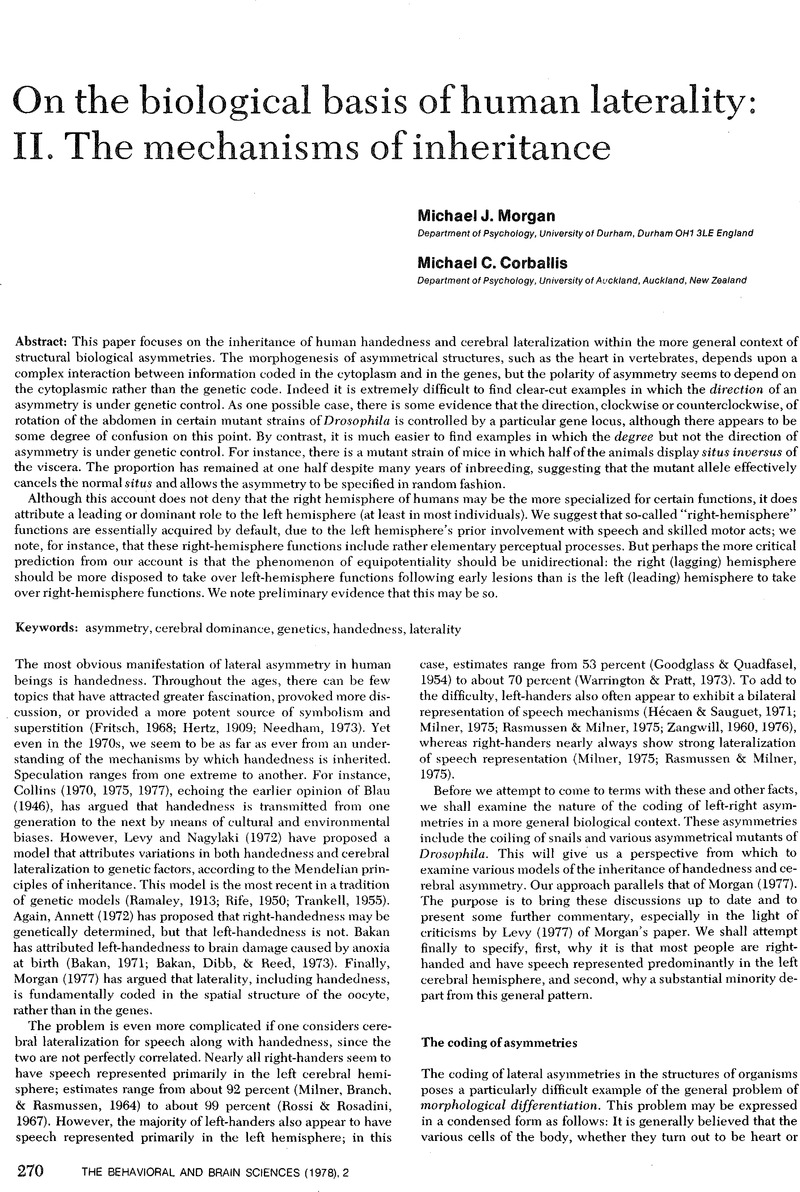Crossref Citations
This article has been cited by the following publications. This list is generated based on data provided by Crossref.
McManus, I.C.
1980.
Left-Handedness and Epilepsy.
Cortex,
Vol. 16,
Issue. 3,
p.
487.
Demarest, Jack
and
Demarest, Lorrie
1980.
Auditory Asymmetry and Strength of Manual Preference Reexamined.
International Journal of Neuroscience,
Vol. 11,
Issue. 2,
p.
121.
Fride, Ester
Collins, Robert L.
Skolnick, Phil
and
Arora, Prince K.
1990.
Immune function in lines of mice selected for high or low degrees of behavioral asymmetry.
Brain, Behavior, and Immunity,
Vol. 4,
Issue. 2,
p.
129.


